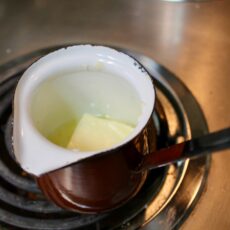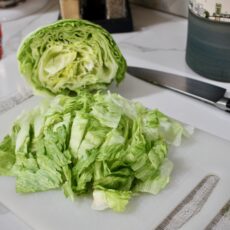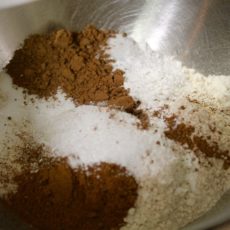Back with another Cooking School follow-up to 18-19: Pasta I from a few weeks ago. 18-10: Pasta II discusses proper pasta making techniques & cooking methods on its front face, as well as offering some tips on using fresh and dried varieties. On the back side, the deep dive into the myriad of pasta shapes that started with 18-9: Pasta I continues–this card covers smaller forms like penne, farfalle, and tortellini.

Most of this advice is pretty generic–here’s a basic pasta dough recipe, and pasta cooking methods are outlined pretty well here. I’ve made both plain dough as well as some with spinach and sun-dried tomato–it’s a lot of work, but the taste difference is pretty noticeable. I don’t currently have a pasta machine, but I’d love to add one to my already-too-large collection of kitchen appliances and tools.
After the jump, read about some more pasta shapes–there’s some links to a few additional pasta dishes we’ve already covered here as well.

They do a pretty good job of summing up a few of the major types of shapes here, and my links that are scattered throughout will cover most of the rest of it–anything I haven’t covered yet, I’ll update when I do. ⌛️

Penne and rotini: 18-9: Pasta I already touches on the larger versions of pasta tubes, but the smaller, short-cut types like penne, rigatoni, macaroni, and rotini are great for pasta salads with other similarly-sized ingredients, thick & meaty sauces, and baked into casseroles. The types with ridges on the sides (like on the penne in the above picture) help those thick sauces cling better. Two of my favorites not listed here are cavatappi and gemelli–I like the former with some quartered cherry tomatoes & a pesto sauce and the latter for homemade baked macaroni and cheese.
- 12-3: Pasta Bolognese
- 12-8: Penne with Broccoli
- 12-11: Italian Macaroni and Cheese
- 12-15: Pasta with Salami
- 13-14: Wok-Fried Veggies with Pasta (pictured above)

Farfalle and conchiglie: Pasta shapes are their own category–serving much of the same purpose as pasta tubes, but with the added benefit of…fun shapes. These types do well where pasta tubes do: giving thick, chunky sauces something to cling to, baked into casseroles, and tossed in colorful pasta salads. Conchiglie (shells), orecchiette, farfalle, and radiatori are all types of shapes that are pretty commonly found.
- 12-4: Pasta with Mushrooms
- 12-9: Pasta with Salmon and Basil
- 12-17: Curly Pasta with Creamy Chicken
- 12-29: New Orleans Beans and Pasta (pictured above)

Ravioli and tortellini: Stuffed pastas are available in both dried and frozen varieties, but are also probably the easiest types to make fresh (especially if you don’t have a pasta machine/maker). I’ve made fresh ravioli and tortellini before, but it’s VERY time-consuming–most of your favorite restaurants (yes, even the “fancy” ones) often use pre-made/frozen types due to this. ⏲ Unless it specifically says “hand-/house-made” (and even then…), assume that they’re purchased from a food supplier. Not that it’s a bad thing per se, but something to be aware of when you’re considering the price listed on the menu.
Simply Delicious hasn’t had any ravioli recipes for me yet, but here’s a few tortellini ones:
- 12-13: Tortellini in Creamy Sauce (pictured above)
- 12-23: Tortellini with Broccoli
For more of Simply Delicious‘ (and my) takes on pasta, check out 18-9: Pasta I, the first part of this two-part Cooking School entry. I hope you found something interesting in these two pasta-related posts–I always think the different types of shapes and sauces are fascinating.



